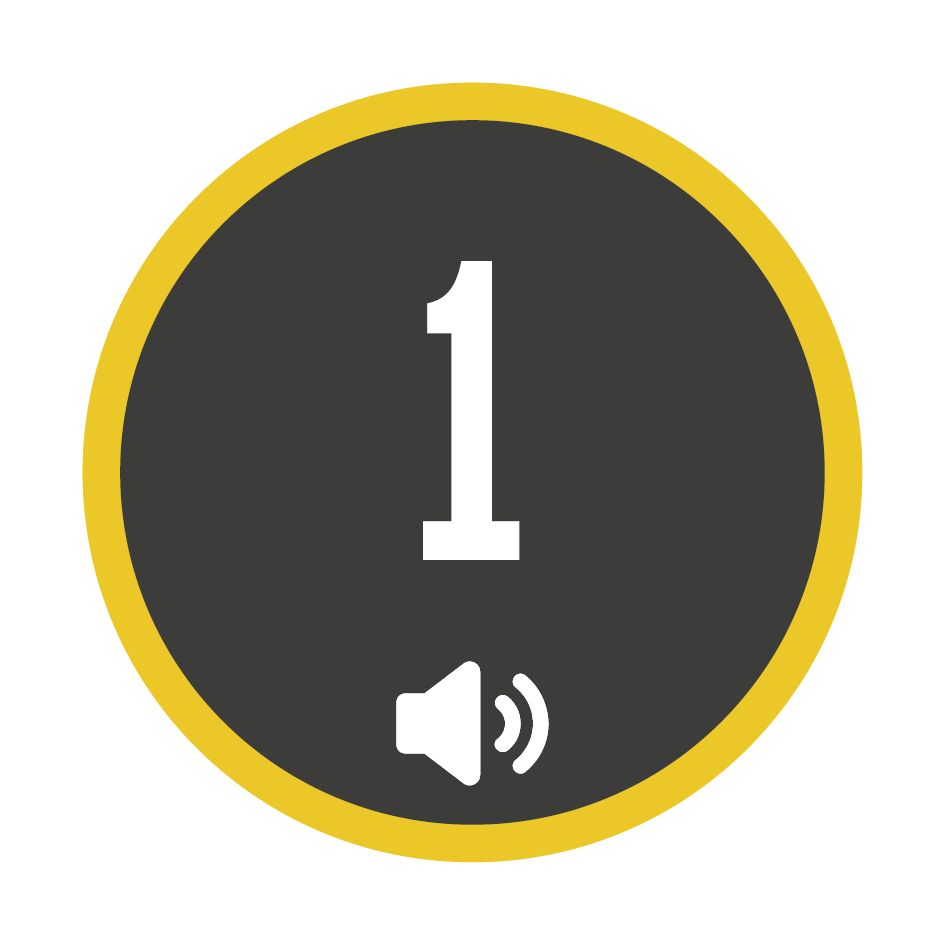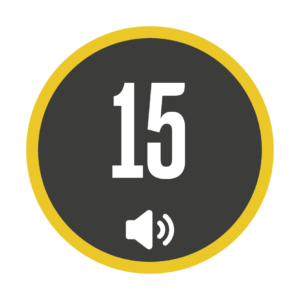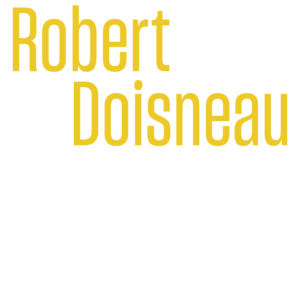
Introduction
Introduction
Welcome to the exhibition « Instants Donnés, A Retrospective of Robert Doisneau’s Work », created by the Atelier Robert Doisneau and Tempora. By following this itinerary, you will discover a dozen themes dear to Robert Doisneau. To truly grasp his work and understand his masterpieces, the photographer himself, with his characteristic simplicity, provides commentary on his own images.
« I’ve managed, let’s say, 300 photos… at most… 300 photos that stand the test of time… 300 photos at a hundredth of a second each, which means barely three seconds of success in 50 years. I have no reason to boast. »
Put together, these amount to three seconds of eternity.
Out of 450,000 negatives, nearly 400 images have been selected for this exhibition. Around thirty of them are featured in this audio guide. We hope you will receive these magical moments with joy and curiosity. Robert Doisneau offers them to you without restraint, as he used to say:
« It’s a pleasure to give! »

Rolleiflex
Rolleiflex
« At the time, the Rolleiflex was the camera we all longed for (…) and I stayed loyal to it for a long time. So much so that by the time I got rid of my first one, all the black varnish had worn away.
I’ve learned this since: when you step into a cage with a lion, the trainer tells you, ‘Don’t be afraid, because if you are, you’ll sweat. And the lion will smell that sweat and it will… well, it will irritate him a little.’ That sweat you get from fear… And when taking photos, you sometimes feel that kind of anxiety, and it wears away the varnish on the camera. (…) The more frightened you are, the whiter the camera becomes. (…) I kept mine for a long time; it had become rounded all over because my hands had worn it down. »

Les frères, rue du Docteur Lecène
Les frères, rue du Docteur Lecène
Because poetry and spontaneity were at the heart of his vision of the world, Robert Doisneau felt connected to childhood throughout his life. Initially, because he considered himself shy. Later, because children accepted him as one of their own. He captures childhood like a film composed of small sequences supported by well-structured photographs :
« I have a little obsession that never changes. I once claimed that for an image to be easily readable, it must take the shape of a letter—V, A, O, I, L… the end, all of it—that’s an idea. A bit of a quirk. I said it partly to provoke. Yes… yes, but still, when a composition follows a geometric form, it works well. »
Aren’t the acrobatics of the brothers on Rue du Docteur Lecène like two letters side by side?

Chalk Hearts of Ménilmontant
Chalk Heart of Ménilmontant
This Chalk Hearts series is emblematic of Robert Doisneau’s desire to move closer to cinema, an art that fascinated him. Creating sequences requires patience, observation, and even determination.
« In cinema, you need authority! You have to be confident, have certainties… and be able to direct a group. I can’t do that. Besides, I feel embarrassed when I work. That’s why people always say to me, ‘Oh, I’d love to accompany you around Paris, it must be so much fun.’ Oh dear! If only they saw me at work! I’d be ashamed—ashamed of standing still because… I look like I’m hesitating, and in fact, I am. I don’t know what I’m waiting for… but I’m waiting. I wait. I have hope. And then… having a witness to these hesitations, to these back-and-forths, stepping into a street, retracing my steps, then setting off again a few minutes later… If I had a witness to all that? No… I wouldn’t want that. It would paralyse me. »

14 July, Canettes Street
14 July, rue des Canettes
This series demonstrates how the photographer blended into the crowd, allowing him to capture children, their games, and their parents up close.
« The more I blend in, the happier I am. Besides, it’s almost a philosophical stance. I don’t want to be a cold, scientific observer. I want to disappear, let people move around me… like that. Crowds scare me. But individuals, alike yet different—that’s what fascinates me. Deep down, I take photos so I don’t die. »
For Robert Doisneau, photography was a way of stopping time, even though time always wins. Yet, he has immortalised this moment—the 14th of July celebration on a street in Saint-Germain-des-Prés in 1949.

Artists' studios
Artists' studios
Workshops were a natural environment for Robert Doisneau. They were a sacred place where ideas became works of art, where hand and tool were guided by creative thought.
« When I visit someone, it’s inevitable that five minutes later, we find ourselves… If it’s a painter, in the studio; if it’s a writer, around their desk. I’m always drawn to the tools. I love it. Really, no… That’s where true merit lies… That’s life. »

Picasso
Picasso
Photographing artists goes beyond technical skill—it requires the instincts of a stage director and a playful spirit, as he demonstrated with Picasso.
« It was on the tablecloth. There were two bread rolls shaped like hands. He noticed my gaze and said, ‘Yes, but it’s the baker in Vallauris who makes these.’ And when I pointed out that they only had four fingers, he said, ‘Then I’ll call them Picassos.’ So, I placed the two rolls next to his plate, and immediately, he made the gesture I had hoped for—placing his arms along the table, aligning them with the bread so they looked like hands. From that moment, I understood the game: I just had to offer him props, and he would instantly improvise something. I only spent two days with him, but in that time, I captured a collection of about 20 different playful shots. He really enjoyed it. »

Robert Doisneau’s studio
Robert Doisneau’s studio
Robert Doisneau’s studio was deeply intertwined with his private life. Located in an artist’s workshop in Montrouge, it blended family life with technical work in a delicate balance—each feeding into the other.
« Ah, my first darkroom was a bathtub. I had a bathtub in the bathroom. Of course, my two little daughters would say, ‘Papa, I need to take a bath!’ So we’d pack everything away, and these children were soaked in a mix of tap water and probably a bit of hydroquinone. »
Yet, the Doisneau studio was also a place of endless invention—collages, surprising compositions that went beyond just the camera. More than the tool, it was the eye that mattered.

Giacometti
Giacometti
« Giacometti was something else… The floor was littered with cigarette butts and scattered daisies… And there he was, kneading his face, saying, ‘Oh, not this morning, no, you’re not going to take my face this morning. Look at the state of me!’ He rubbed his face, and then, after a while, he’d say, ‘Come on, let’s go for a coffee on Rue d’Alésia.’ So we’d go out, then come back.
His studio… you know, that sculptor’s dust, that dirty plaster, it coated everything—giving a patina, a unity to the whole place: the rough drafts, the table with all the jars… Everything was covered in that same grey dust. And that—well, that was perfect for a black-and-white photographer. »

Advertisements
Advertisements
From the very beginning of his career, Robert Doisneau had opportunities to create advertisements, notably at the Uhlman pharmaceutical company’s workshop. Later, when he worked for Renault between 1934 and 1939, he had to adapt his craft for showcasing vehicles at the first motor shows. He commented on two striking photographs of a car without a body:
« Back when I was at Renault advertising was incredibly corny. So, when it came to taking photos for the motor show, to demonstrate the car’s spacious interior, we had to improvise. Since the bodywork wasn’t ready, we staged these shots in the studio—people sitting on the floor, pretending to steer a fake wheel, looking completely relaxed. They weren’t models, just employees from the department. »
He also created photographs featuring mannequins posed in luxury cars in picturesque locations like the Parc de Saint-Cloud. Renault continued to call on him even after he left. In the 1950s and 1960s, Simca also commissioned his services. More broadly, producing advertisements for all kinds of products was simply part of the daily routine at the agency.

Facing the Work
Facing the Work
Robert Doisneau was interested in art, but even more so in the reactions it provoked in viewers.
« When people talk about ‘image hunters,’ it makes me smile because I’m not a hunter of images—I’m a fisherman of images. And in the case of the painting in the shop window, it wasn’t fly fishing, where you chase after the trout—it was still fishing.
It was around 1947, and it caused a bit of a scandal. This woman in black stockings, showing her backside… From inside the shop, I watched as passersby reacted—many were shocked. Then, a couple stopped. The woman was completely absorbed in the silhouette of a vase in front of her, studying it intently. Meanwhile, the man cast a very, very sideways glance at the other curve nearby.
That sly look… that was what interested me. But really, it was just luck. »

The Vogue years
Vogue years
« People who do nothing are very beautiful… You think that because they spend their time in the bathtub, they are brushed, polished… and then well-dressed as well. Women are very, very beautiful at those grand balls where I used to take photos… acrobatically… because it wasn’t easy to do… but I was the gardener’s son invited to play with the children of the château. »
Yet, Robert Doisneau succeeded in this mission, which covered the revival of Parisian cultural life, fashion, and high-society events. His work was carried out with professionalism and rigour. In this exotic context, as he saw it, he stuck to his habits; for instance, at a grand wedding in Paris, he chose to follow a little girl rather than the celebrities. Likewise, in the workshops, he focused on the countless working women whose skilled hands crafted these glamorous cultural spectacles.

About criticism
About criticism
« At times, I felt like I was betraying my original choice. But then, there was something else—the duty to play the fool in these situations. To make fun of this world just a little. These wicked fairies of fashion, these kinds of wicked stepmothers who decide whether a collection is worthless or sublime. There’s never any middle ground, you know: they always use extreme adjectives. Vicious creatures.
And… these women are truly dreadful. It’s a world of unique cruelty, of utter lack of elegance, of shamelessness. So, let’s choose the right word: they are ugly. »

Balls
Ball
« The first ball I was assigned to photograph, I had met Monsieur Etienne de Beaumont at Vogue in the afternoon, in Edmonde Charles-Roux’s office. He was an old gentleman with white hair, a distinguished voice, quite tall, pink-cheeked like figures in 18th-century paintings. A truly remarkable man who made and unmade Parisian society. He said to me, ‘Well, for this evening, do come before our guests arrive.’
He was hosting a grand ball in his private hôtel particulier. I had an assistant, Maurice. Maurice and I rushed to Le Cor de Chasse, where they rented out tuxedos. The lady there said to us:
- ‘Come back on Tuesday, and we’ll have your measurements ready.’
- ‘No, no, madam, we need them right now.’
- ‘But you can’t do that.’
- ‘Of course we can… with safety pins.’
So, we arrived in the entrance hall of his mansion, held together with safety pins to keep the sleeves and trouser legs from being too long. We had two American army satchels full of flashbulbs, because at the time, flashes were single-use bulbs.
Then Etienne de Beaumont stood on the staircase. We entered the vestibule—two absurd-looking penguins. He looked at us and said, ‘Gentlemen, you are going to be the kings of the evening.’ Now, that was a man with a sense of humour! »

Fashion
Fashion
« I was not made for fashion photography. I don’t care about it at all. There are two things that bore me terribly: a fashion show and the weighing-in at Longchamp or Auteuil. These are people who exude boredom. False value—oh dear, that’s truly painful for me. It’s hell.
De Bruneau was a very charming man. He used to say to me: ‘Go to the Dior show and tell me which dresses inspire you.’ By the fourth model, I had completely lost any interest in the show.
The next day, Michel de Brunhoff would ask me, ‘So, which dress?’ I’d just pick numbers at random, as if I were betting on a horse race. 13, 17, 23, and 34. Bam. And in the studio, they would bring in dresses 13, 17, 23, and 34. »

Writers
Writers
Robert Doisneau was always close to writers, fascinated by their ability to invent worlds that stray from reality.
« I want to tell stories, above all. I drew, I did what everyone with a self-taught background does when they come to photography. I was first an engraver, I used to draw. Because an image for the sake of an image—well, an image… But what amuses me the most, what influences me the most, are perhaps writers and certain poets. Not grandiloquent poets, but poets who speak of the things we see every day. Prévert, for example, yes. »
Yet photographing writers is a challenge.
« The most difficult people to photograph are writers because they have no physical gestures. A painter, a sculptor—you place them in their studio, and boom! They naturally take on the right posture. But a writer—that’s not easy. It’s abstract! »
His talent allowed him to create settings that subtly reflected aspects of their work, capturing unique personalities and painting a fifty-year-long portrait of literature, engaging in deep conversations with figures like Cendrars, Giraud, or Prévert.

Robert Giraud
Robert Giraud
« Giraud was my companion of the night. He didn’t write enough in his lifetime. (Le Vin des Rues was something, really). Giraud… at that time, he worked in a gallery on Rue de Seine. That’s where I met him. He had invited me to come and see some extraordinary characters. And that was just when I had resolved to focus only on people in completely ordinary, everyday life—nothing picturesque.
And then I met Giraud, who took me to see people tattooed from head to toe, a man who bred ants in a cellar to collect their eggs to feed pheasants—unbelievable things… And Giraud remained my friend. More than that—like a brother, absolutely. »

Blaise Cendrars in Aix-en-Provence
Blaise Cendrars at Aix-en-Provence
« I went to see him in Aix-en-Provence. I waited for three days, and then I found him getting a shave at a barber’s—at the very same barber’s where I was having my hair cut, not knowing what to do with myself.
And then, when the man with the white towel stood up, he had only one arm—it was him.
So, I went to take photos of him in old Aix. It was good.
Later, we were at his place too, where he worked facing a wall, with a sheet of paper in front of the bare bulb to protect his eyes. He wore a coat, the lining of a duffle coat draped over his shoulders like this. He was freezing in that place.
That’s where he wrote his first books after L’homme foudroyé.”

Bistrot
Rue Lacépède, Vème arrondissement
Robert Doisneau was a regular at the bistros of Paris and its suburbs, often accompanied by Robert Giraud, who introduced him to this world. Most of these establishments have disappeared today. He had his usual spots, like Chez Fraysse, but he never hesitated to discover new places, which, like living beings, had to be tamed.
« Here in Paris… Before taking a photo in a café, I have to drink the equivalent of ten litres of Beaujolais… It takes time… not all in one day, of course… I come back until I become part of the scenery. Until I blend in… Until I make allies… And only then can I start to hope to take a photo. »
La Mère Guignard, Le Café Curieux, Chez Tourette, Aux Chasseurs—these were places where he witnessed incredible scenes and collected fascinating anecdotes.

Pierrette d’Orient
Pierrette d’Orient
« I had met a very, very beautiful woman named Pierrette d’Orient. We were on Rue Mouffetard with Mérindol. I heard a voice say:
- ‘May we sing, boss?’
- ‘Yes, yes… if you like.’
I saw a singer—truly captivating, exuding seduction immediately. She had a slightly disdainful air; she dominated her shrivelled little male audience. And she sang, ‘You can’t imagine how much I love you, it’s so sweet to be cuddled.’ Oh, it was marvellous. When she finished her song, I went up to her and said:
- ‘Would you mind if I took a photo of you?’
- ‘No.’
So I discreetly slipped a bit of money into her saucer—she must have liked that. And I took two or three pictures of her. Actually, the best photo I have of her is from that day.
Later, my friend Giraud arrived and said, ‘Where are you headed next? To Les Halles? Well, that interests us.’ So we followed her to Les Halles, to the butchers of La Villette. The butchers, the slaughterers, covered in blood, wept when she sang, ‘You can’t imagine how much I love you.’ She was stunningly beautiful. »

Mademoiselle Anita
Mademoiselle Anita
« Before she took off her bolero, she was more anonymous. I was right to wait, to be bold: ‘Would you mind if…?’ ‘Yes.’ And on her own, she took off her little bolero. And at that moment, the chrysalis opened, and the butterfly appeared. »

Seriousness
Seriousness
As a child, Robert Doisneau wandered through places of hardship, deprived suburbs whose essence he later captured as a photographer, determined to uncover moments of wonder in everyday life—even if…
« That is to say, it is easier for someone who extracts beauty from places where only banality is expected. And it is good to reveal that there, too, lie moments of beauty, charm, and possible exaltation. Yes. »
And when he spoke about his subjects, he was, deep down, speaking about himself.
« In the end, I only take self-portraits—I am in them. I have a great deal of compassion. It’s because I pity myself, and yet, ultimately, I love myself. And I love all these people too. And that fleeting moment of happiness they have stolen from life—why not make it eternal? »
Through these portraits, Robert Doisneau acted as a kind of photographic developer:
« People carry with them a treasure they are completely unaware of. So, I show them that this treasure exists. From that moment on, they can say, ‘Oh, but that belonged to me. I didn’t know I had that treasure within me.’ That is where I come in. Yes, I reveal it. That is my social role—to show what is already there. That is it. »

Leica
Leica
Like all photographers, Robert Doisneau’s work exists both in the positive—what he chose to capture—and in the negative—what he decided not to photograph. To take a picture means to rely on, and press the button of, a faithful travelling companion: the camera.
« A camera is like a firefighter’s helmet—it gives you courage. »
Yet sometimes, the camera was unwelcome. Either because the photographer refused to immortalise degrading situations…
« There are things that should not be done. For example, the liberation of Paris. The shaved women—those images should not be shown. I mean, yes, perhaps they exist historically, but it was so ugly, so cowardly. All those people who had done nothing during the Occupation, suddenly turning into executioners. Once again, that need for power, to play judge and jury. »
…Or because his presence was simply not wanted.
« I leave, I go. You can’t insist! I won’t force my way in! Sticking a foot in the door—that’s for vacuum cleaner salesmen. I’m not a vacuum cleaner salesman! »
These situations, however, were rare, because, as he himself admitted, Robert Doisneau blended into his surroundings.
« Because most of the time, I live in environments that are entirely familiar to me, where I am tolerated, even well-known. »

Industries
Industry
« At that time, I should have done an entire series on the working world. While I was at Renault, I could only capture what happened inside the Billancourt factory… 30,000 workers—you see, there were certain limitations… But I should have documented the living conditions of people in heavy industry, in the mines, among the fishermen. All those professions—the locomotive drivers, for example, whom I got to know later.
Each time, I only scratched the surface. I never truly lived with these people for several days or weeks. I couldn’t, because I had to provide for my family—I had to take on commercial work. But perhaps I also lacked the will, the organisation, the method to succeed in that project. »

Suburbs, Black and White
Suburb, black and white
Whether it was Josette’s Twentieth Birthday, Springtime Bicycle, or The Little Terrace, these 1950s suburban photos were always taken by Doisneau with a certain restraint but with a clear focus on people.
« The street I had known as a child in Gentilly, I felt that I deserved a softer, more pleasant setting than the one I was struggling in. And the contrast between the absurd, very ugly backdrop of the Parisian suburbs and the people passing through it—by contrast with the background, the tenderness of people becomes much more touching.
That’s what I wanted to show. At its core, it was a sort of grumble, a complaint. »

Suburbs, Colour
Suburb, color
Thirty years later, he took the opposite approach, photographing saturated images where life seemed to have evaporated.
« Colour had to be used. It wasn’t a mood or an experiment for me. It was absolutely necessary. This new element—colour—adds another layer of documentation. »
« The suburbs I knew were sad. Now there are cars, harsh and colourful like big houses, and the houses themselves are very colourful. I think it was a way of making the sauce that helps the fish go down.
The dimensions of these buildings—so they slap some colours on them. It’s not decoration; it’s makeup to make them seem pleasant.
The suburbs I knew were grey and brown, with black cars. Now there are cars as colourful as a string of pearls at the base of these big buildings, and the buildings themselves are very colourful.
I think it’s a way of making the sauce that helps the fish go down. It’s so frightening. The size of these buildings, and they slap colours on them. It’s makeup. I don’t know, it’s not decoration. They paint them up to make them look friendly. »

The Caretaker with Glasses
The concierge
A direct gaze, a perfect distance that allows the subject’s expressions to shine, impeccable framing… That was all it took for this concierge, captured in Paris in 1949 and published in Vogue, to become an icon. But is this concierge even real?
« Reality doesn’t exist. Reality is something we create. Just choosing the moment that suits you already alters reality. It’s not real at all—it’s completely manufactured, our stories. We don’t intervene by moving the characters, but we choose them in time and space. We place ourselves in a spot that suits us. So…it’s a kind of false testimony…yes… But we use real materials, and that’s good. It gives it solidity. And people believe in it. »

Pitiful Pastel
Pastel Pitoyable
A priest trampling on angels without turning back creates an amusing scene that makes one wonder how the photographer provoked such an unusual interaction.
« Chance is important. All the fortunate encounters I’ve had in my life—chance brought them to me. And you also meet real scoundrels in the street. That’s true, there’s dross, things of no interest, and ugly things. But for that, you need a capacity to forget. »
« After two hours of waiting, maybe less. But two hours is my limit. I can’t go beyond that. Because after that, attention drifts, you become less receptive. And that’s exactly when…the little mischievous god sends you a scene you hadn’t expected.
Of course, there are literary, pictorial, and cinematic memories that make you hope…hope for things. Finally, you have a great setting. It often happens like that. I set up a small scene, a rectangle, and I wait for actors to come and play something—I don’t know what.
Then the imagination works. You tell yourself, ‘Maybe someone will come, maybe a one-legged priest, maybe a boarding school of English girls.’
But something completely different arrives. And because you weren’t expecting it, this thing catches you off guard. And you’re stuck.
Then you curse yourself, saying, ‘I didn’t react, my reflexes didn’t kick in at that moment because I was expecting something else.’
And it’s not good to expect something specific. In other words, a photographer full of references will only illustrate his references. »

Hell
Hell
Robert Doisneau believed that disobedience was essential to photography. He had an aversion to authority and its representatives.
« The enemy of a photographic image is first and foremost potassium cyanide because it destroys the silver image.
And just as much—the uniformed cap. ‘Move along, nothing to see here.’
But you must stop and look! »
With this image, captured from his observation post at a street corner, he sends this mark of authority to hell, opening the doors to the paradise of complete photographic freedom.

The Kiss by the Hôtel de Ville
The Kiss at City Hall
« There are so many people claiming to be the lovers from The Kiss at the Hôtel de Ville. In reality, there were only two people. But I have fifteen, twenty—no, it’s an even number—eight, ten claimants. No, no, this photo worries me a little: its success shows that it’s a very, very easy effect. And the reason so many people identify with it is because it’s a symbol of a happy moment. That’s it. They would have liked to be there. And from that to thinking it was them—there’s just one small step. »
Credits Audioguide
INA Archives

